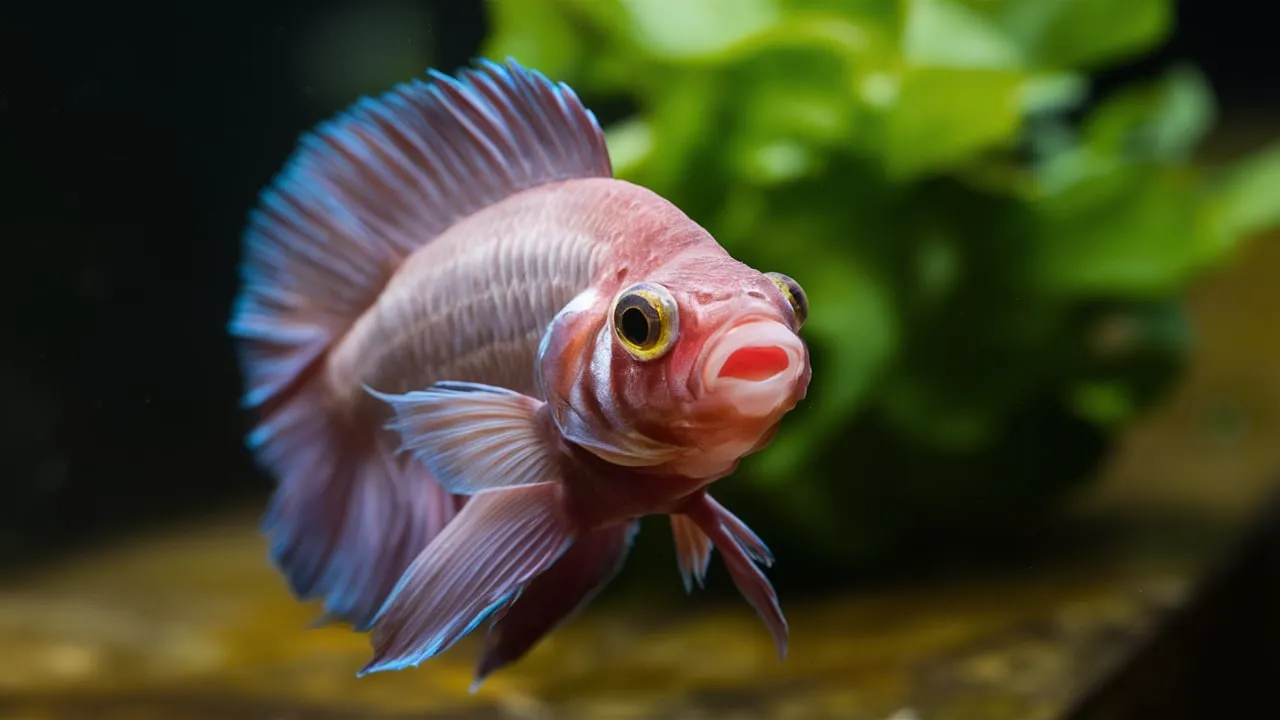Betta Fish, also known as Siamese fighting fish, are a popular choice among aquarium enthusiasts due to their vibrant colors and unique personalities. One common question that arises among betta fish owners is whether these fascinating creatures have teeth. In this comprehensive guide, we will explore the dental anatomy of betta fish and provide insights into their feeding habits.

Do Betta Fish Have Teeth?
Betta fish, like many other fish species, possess a unique set of teeth that serve specific purposes. These teeth are known as pharyngeal teeth, and they are located in the fish’s throat, rather than in the mouth. The pharyngeal teeth are used for crushing and grinding the food that the betta fish consumes.
The Presence of Pharyngeal Teeth
Betta fish do indeed have teeth, but they are not the sharp, pointed teeth that one might expect. Instead, their teeth are small, flat, and molar-like in appearance, designed for grinding and crushing their prey. These teeth are located in the pharyngeal region, which is the area behind the gills, and they play a crucial role in the fish’s feeding process.
Function of Pharyngeal Teeth
The pharyngeal teeth of betta fish serve two primary functions:
Food Manipulation: The teeth help the betta fish manipulate and break down their food, making it easier to swallow and digest. This is particularly important for betta fish, as they primarily feed on live prey, such as small insects, crustaceans, and even small fish.
Crushing Hard-Bodied Prey: The pharyngeal teeth of betta fish are well-suited for crushing the hard exoskeletons of small crustaceans, like brine shrimp or daphnia, which are often part of their natural diet.
Betta Fish Feeding Habits
Betta fish are carnivorous and have specific dietary requirements. They are known to be voracious predators, capable of consuming a wide range of prey.
Preferred Food Sources
Betta fish are typically fed a diet of high-quality pellets or flakes, as well as live or frozen foods such as brine shrimp, bloodworms, and daphnia. These types of food provide the necessary nutrients and energy for the betta fish to thrive.
Feeding Behavior
Betta fish use their pharyngeal teeth to crush and grind their food before swallowing it. They have a unique feeding mechanism where they draw water into their mouths, trapping the prey, and then use their pharyngeal teeth to break down the food before swallowing it.
Caring for Betta Fish Teeth
Maintaining the health of your betta fish’s teeth is crucial for their overall well-being. Here are some tips to ensure your betta fish’s dental health:
Provide Appropriate Diet: Feeding your betta fish a balanced diet that includes a variety of live and frozen foods can help keep their pharyngeal teeth healthy and functioning properly.
Avoid Overfeeding: Overfeeding can lead to dental issues, as excess food can accumulate in the fish’s throat and cause problems.
Monitor for Dental Problems: Keep an eye out for any signs of dental issues, such as difficulty eating or changes in feeding behavior, and consult a veterinarian if you notice any concerns.
What Are Some Common Dental Problems In Betta Fish And How Can They Be Treated?
Betta fish, also known as Siamese fighting fish, can sometimes develop dental problems. Here are some common dental issues in betta fish and how they can be treated:
Mouth rot (Columnaris):
- Symptoms: White or yellow patches on the lips, mouth, and gills.
- Causes: Bacterial infection, poor water quality, stress.
- Treatment: Perform water changes, use an antibiotic medication specifically formulated for treating columnaris.
Mouth fungus:
- Symptoms: White, fuzzy growth on the mouth and lips.
- Causes: Fungal infection, often secondary to other health issues.
- Treatment: Use an antifungal medication, such as methylene blue or copper-based treatments.
Impaction/Constipation:
- Symptoms: Difficulty opening the mouth, swollen or protruding mouth.
- Causes: Overfeeding, lack of fiber in the diet.
- Treatment: Provide a fasting period, then feed a small amount of high-fiber foods like daphnia or blanched vegetables.
Scar tissue/deformities:
- Symptoms: Misshapen or scarred mouth.
- Causes: Injuries, previous infections, or genetic abnormalities.
- Treatment: No specific treatment, but provide good water quality and a suitable environment.
Mouth injuries:
- Symptoms: Torn, cut, or bleeding lips/mouth.
- Causes: Aggressive behavior, collisions with tank decorations.
- Treatment: Perform water changes, use an antibiotic medication to prevent infection.
To prevent and manage dental problems in betta fish, it’s important to maintain good water quality, provide a balanced diet, and minimize sources of stress and injury in the tank. Seeking veterinary advice or using appropriate medications can also be helpful in treating specific dental issues.
Conclution
By understanding the dental anatomy and feeding habits of betta fish, you can provide the best possible care for these fascinating aquatic creatures and ensure their overall health and well-being.

Related Posts
How To Clean Filter Socks?
How To Clean Fish Tank Ornaments?
Ideal Betta Fish Companions